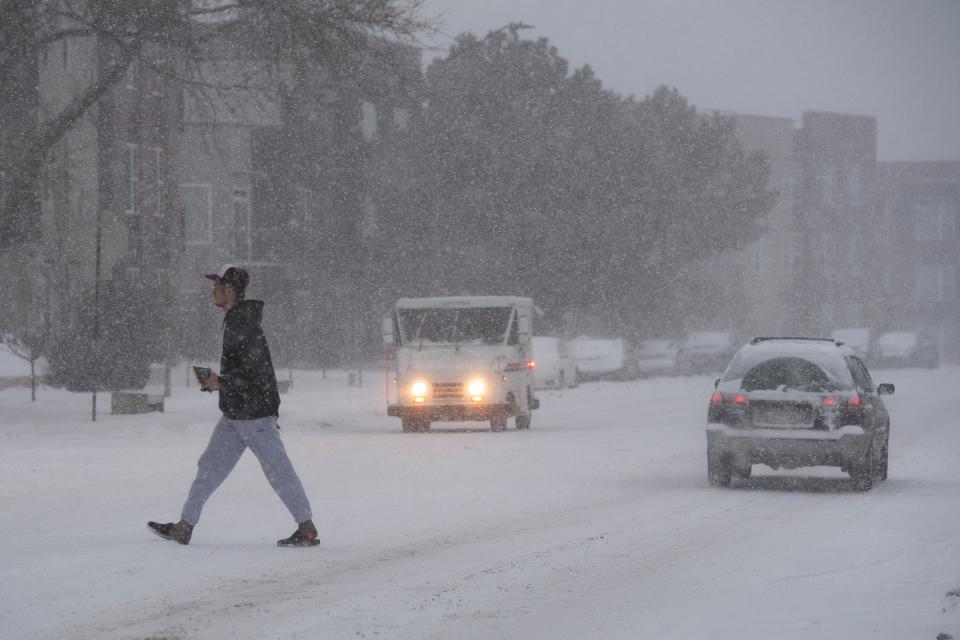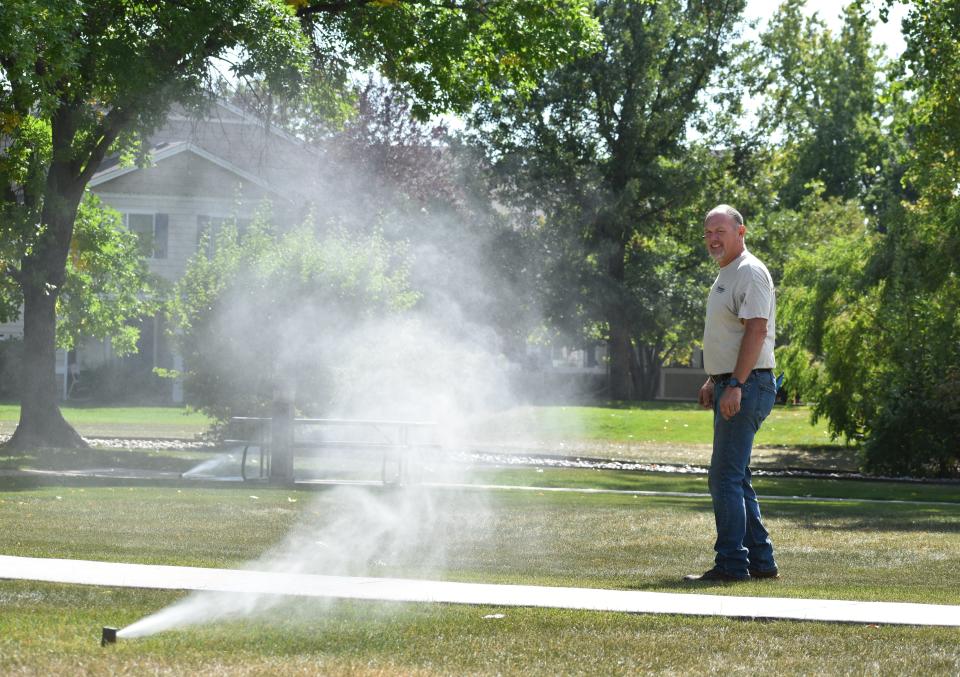Weekend weather: Fort Collins flirting with chance of first snow, freeze of season
Fort Collins will go from being under a red flag warning Friday afternoon to a chance of seeing its first snow and first freeze Sunday night.
Big changes are in store this weekend, so let's take a look at how the weather will impact your plans — from attending Saturday's Colorado State University home football game against Hawaii to finally getting those fall yard chores done.
Is there a better chance of Fort Collins seeing its first snow this weekend or CSU winning?
It's been a rough season for CSU, but bet on the Rams in this comparrison.
The National Weather Service says Fort Collins has a 40% of chance of snow late Sunday night into Monday morning.
CSU (1-5) has a 72.5% chance of beating Hawaii (2-4), according to ESPN.

Here's a look at temperatures for CSU game day
10 a.m.: Tailgating starts with a forecast temperature of 58 degrees and south-southwest wind of 14 mph.
2 p.m.: Kickoff has a forecast of 73 degrees with south-southwest wind at 12 mph.
5 p.m.: Near the end of the game, the forecast predicts 72 degrees with south-southwest wind at 10 mph.
When is Fort Collins' first average snow and freeze?

The city's first measurable snow falls on average of Oct. 26, according to the Colorado Climate Center. The earliest snow in more than 130 years of weather history for the city came Sept. 8, 2020, when 0.3 inches fell, followed the next day by more than 2 inches.
Weirdly enough, that came just a couple days after the city reached a record-high of 99 degrees.
There is a 50% chance of our first freeze (28 degrees) by Oct. 11 and a 90% chance by Oct. 26. Our low temperature this fall has been 31 degrees, which happened Monday, Tuesday and Thursday.
Wednesday and Thursday both reached daytime highs of 80 degrees, which was only the second time since 2003 the city has seen back-to-back 80-degree days this late in October.
Colorado's mountains in line to see first significant snow
The mountains are looking at 4 to 8 inches of snow with a few areas, including Vail and Telluride, possibly getting 10 or more inches, according to 9News meteorologist Chris Bianchi.
Colorado fall lawn and garden care: When to winterize sprinklers, aerate and fertilize
Last chance to blow out sprinklers to avoid costly damage

The National Weather Service forecast is calling for lows of 28 degrees Monday night and 29 degrees Tuesday night for Fort Collins.
Temperatures that low can damage the above-ground parts of your sprinkler system.
You can either pay a commercial landscape company about $60 to blow out your system, or if you or a friend has an air compressor large enough, you can blow out the sprinkler system yourself.
Here's how for a typical sprinkler system:
Turn off the water shut-off valve to your sprinkler line, usually located in your basement or crawl space. Note that you usually have a valve specifically for your sprinkler system that comes off your main water valve, or you may have to shut off the main water valve.
Make sure the outlet drain valve is open to your sprinkler system, as this is the line that you will be using air to blow out each zone. Also make sure the backflow device outlet is closed.
Connect the hose from your air compressor to the threaded outlet drain valve located outside near your backflow device. You might have to buy an air compressor adapter to fit onto the drain.
If your system is not equipped with an outlet drain valve, it is recommended you install one. You can drain your system without an outlet drain valve by blowing air through one of the petcocks, which are usually two little drain valves located on the side of your backflow device. However, blowing air through these small passages can heat up plastic parts inside the backflow device and warp or crack them.
When the air compressor shows 80 pounds per square inch of pressure on the gauge, turn the valve to your first zone and allow pressure to push the water out of the sprinkler heads for as long as it can. Then move to the second zone and so forth until you have blown out all the zones.
If your air compressor is small, you may have to blow out each zone more than once.
After you are done blowing out the sprinkler system, turn all the ball valves and petcocks to a 45-degree position so they are half open and half closed. This will allow any remaining water to drain out.
Make sure the line to the sprinkler system in the basement or crawl space is shut off completely and that you open the inlet drain valve in your basement and place a bucket under it just in case. This allows any water seeping from the sprinkler line to drain out of the inlet drain valve and prevent accidentally refilling your system and causing freeze damage.
Unplug your timer and remove batteries, and you're good for the winter.
This article originally appeared on Fort Collins Coloradoan: Fort Collins could get first snow, freeze with weekend weather shift

